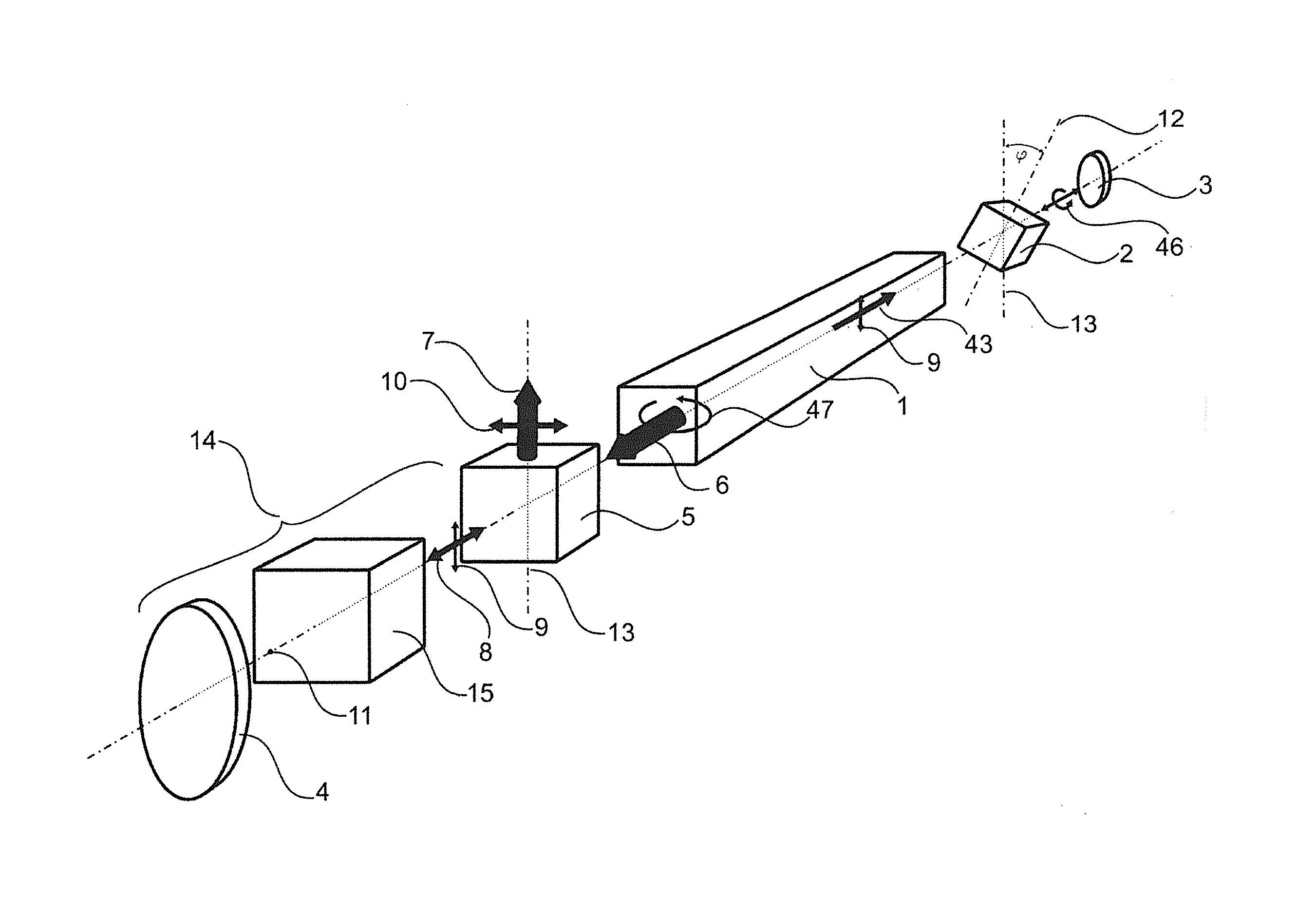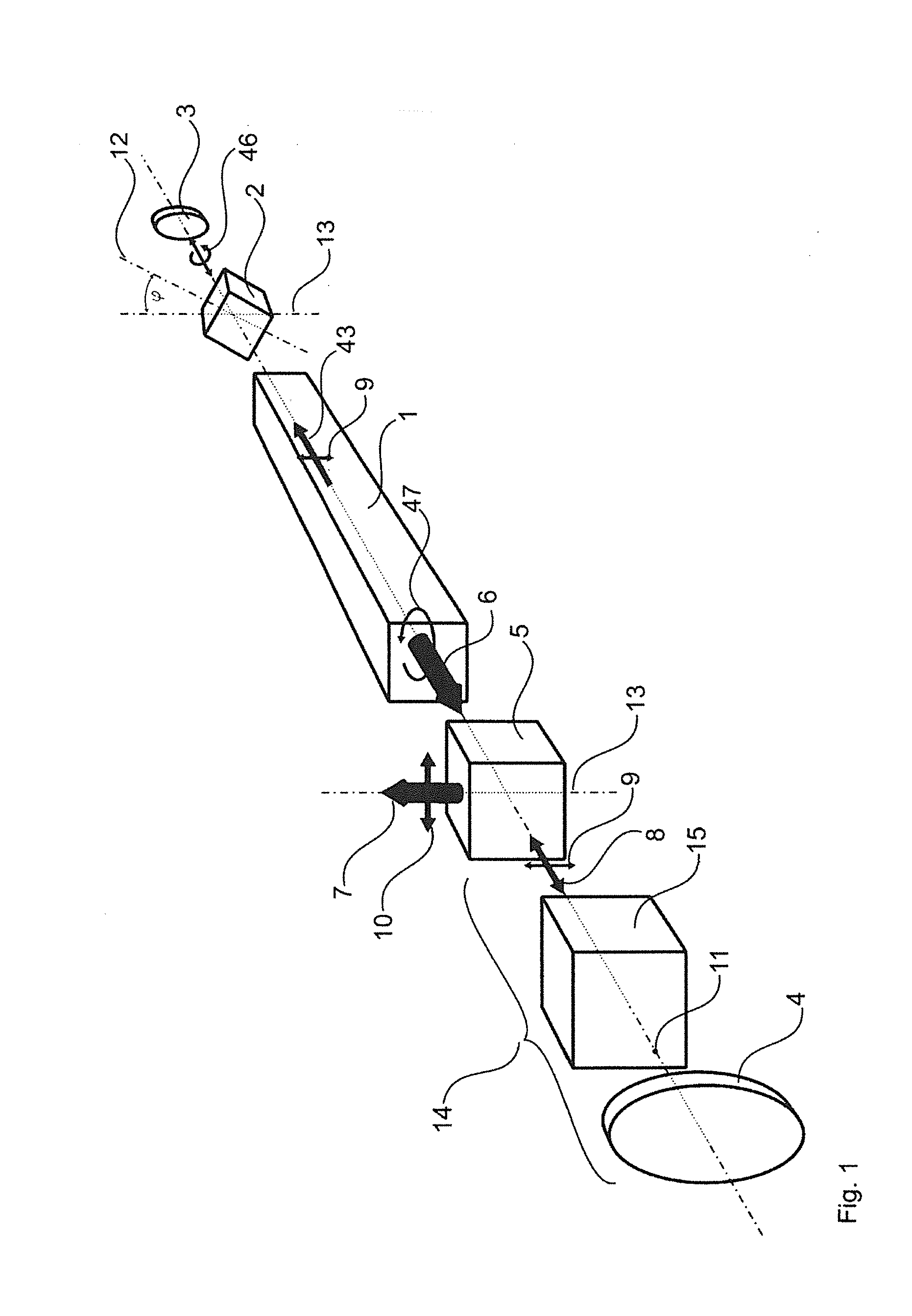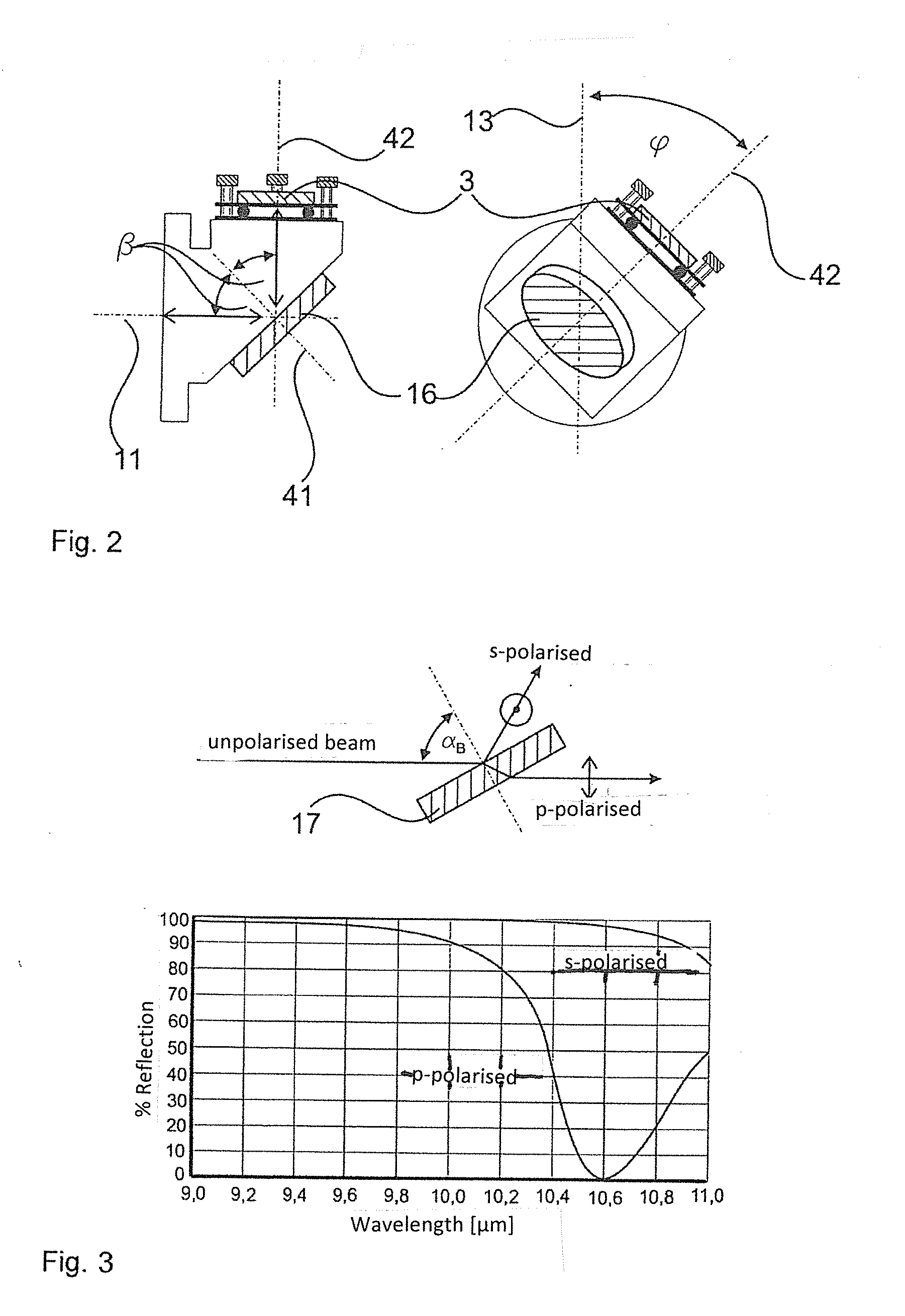Co2 laser with rapid power control
- Summary
- Abstract
- Description
- Claims
- Application Information
AI Technical Summary
Benefits of technology
Problems solved by technology
Method used
Image
Examples
Embodiment Construction
[0084]FIG. 1 shows diagrammatically the basic structure of the CO2 laser according to the invention. First, it does not play a role, which specific geometric conditions are present, in particular in view of the active medium 1. The sketch shows that the resonator is closed at each of both ends by a highly reflecting mirror 3 and 4. By the polarisation beam splitter 5, the resonator is divided into a high-power branch that inter alia contains the active medium 1, and the feedback branch 14 that is characterised by relatively low power. This desired sub-division is achieved by the combination of the polarisation beam splitter 5 and the λ / 4-phase shifter 2 at the other end of the resonator in the following manner. When, coming from the direction of the active medium 1, radiation 6 with an initially arbitrary polarisation falls upon the polarisation beam splitter 5, it is sub-divided into two portions linearly polarised in directions perpendicular to each other, one of which is reflecte...
PUM
| Property | Measurement | Unit |
|---|---|---|
| Pressure | aaaaa | aaaaa |
| Angle | aaaaa | aaaaa |
| Power | aaaaa | aaaaa |
Abstract
Description
Claims
Application Information
 Login to View More
Login to View More - Generate Ideas
- Intellectual Property
- Life Sciences
- Materials
- Tech Scout
- Unparalleled Data Quality
- Higher Quality Content
- 60% Fewer Hallucinations
Browse by: Latest US Patents, China's latest patents, Technical Efficacy Thesaurus, Application Domain, Technology Topic, Popular Technical Reports.
© 2025 PatSnap. All rights reserved.Legal|Privacy policy|Modern Slavery Act Transparency Statement|Sitemap|About US| Contact US: help@patsnap.com



